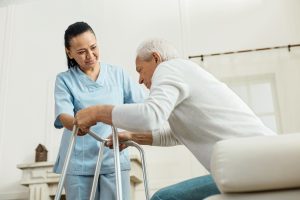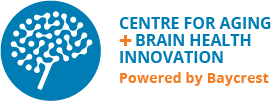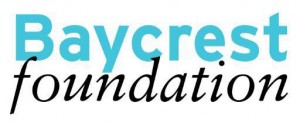Pressure injuries (also known as pressure ulcers or bed sores) pose a significant challenge for the Canadian and global healthcare system, particularly among older adults and people living with dementia. Thousands of Canadians are diagnosed with the painful condition each year, and while preventable, pressure injuries can be fatal.
A 2003 report funded by the Canadian Association of Wound Care found that 26 per cent of patients across all healthcare institutions had a pressure injury[i]. Updated estimates are sparse, and little is known about the extent of the damage caused by pressure injuries today, a reality that has stalled the development of cutting-edge prevention and treatment options.
New technology from Canadian startup Rehabtronics is working to change that. They’ve developed an attachable electric stimulation device designed to prevent pressure injuries in at-risk patients. The device is powered by algorithms that trigger muscle contractions in the body, increasing the oxygenation and blood circulation needed to keep skin healthy and ward off sores. Designed with intuitive features, the device is adaptable and easy to use across multiple care settings, such as hospitals and long-term care facilities, as well as in homes.
“One of our visions is for seniors to remain independent at home – and that’s where all healthcare should move towards. If we can help the cause here in any way, then that’s what we’re going to do.”
“This technology has the ability to significantly reduce bed sores for a diverse population,” says Rehabtronics CEO, Rahul Samant. “This is especially true among the elderly and those living with dementia, where the vast majority of pressure injuries occur.”
Underlying Causes of Pressure Injuries in Older Adults

Lack of movement in older adults can contribute to the development of pressure injuries.
Frailty, illness, and the onset of cognitive conditions, such as dementia can limit mobility in older adults. As a result, the body may lose its ability to build up protective muscle tissue needed to prevent the development of pressure injuries. Additional factors related to aging, such as the natural thinning of the skin, appetite loss, and incontinence can heighten the risk of pressure injuries developing across vulnerable areas in the body.[i]
Respiratory conditions, like those brought on by COVID-19, amplify these risk factors.
“COVID-19 patients are at an increased risk of bed sores because they already have low oxygen levels due to respiratory distress,” Samant explains. “That’s why we’re working to get our device into intensive care units as quickly as possible.”
Rehabtronic’s budding partnerships with international healthcare organizations, such as the Cleveland Clinic in the US, will help them accomplishing this goal. The company also hopes to expand its impact with the network of experts and advisors they’ll have access to as part of CABHI’s MC² Market Readiness program, launched in partnership with National Bank. MC² Market Readiness provides healthtech companies with direct access to the Silicon Valley ecosystem and entry into Berkeley SkyDeck’s accelerator program. CABHI also provides successful applicants with an investment of up to $150,000 CAD towards achieving a key business milestone and raising Seed or Series A funding.
“We’ve already met two of our advisors from the program and they’ve been fantastic,” says Samant. “They’ve been instrumental in immediately helping us see the path forward and how to address particular challenges that we’re facing as a startup.”
Having access to global markets through the Silicon Valley network helps startups like Rehabtronics grow, scale, and market their life-saving solutions.
“When I saw first-hand the impact bed sores have on patients, how quickly it can progress, and the catastrophic outcomes it can have, I got really passionate about the issue,” Samant says of Rehabtronic’s motivation behind developing the device.
With the development and market launch of their electric stimulator, Rehabtronics hopes to improve the lives of older adults by helping them feel empowered about aging in their setting of choice, without the risk of developing fatal pressure injuries.
“One of our visions is for seniors to remain independent at home – and that’s where all healthcare should move towards. If we can help the cause here in any way, then that’s what we’re going to do.”
[i] https://www.alzheimers.org.uk/get-support/daily-living/pressure-ulcers
[i] https://www.woundscanada.ca/docman/public/health-care-professional/bpr-workshop/172-bpr-prevention-and-management-of-pressure-injuries-2/file


